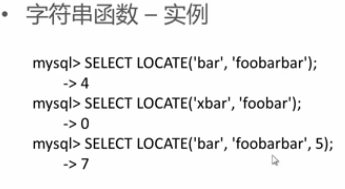The UNION operator is used to combine the result-set of two or more SELECT statements. The default behavior for UNION is that duplicate rows are removed from the result. The optional DISTINCT keyword has no effect other than the default because it also specifies duplicate-row removal.
With the optional ALL keywor duplicate-row removal does not occur and the result includes all matching rows from all the SELECT statements. MySQL UNION operator allows you to combine two or more result sets of queries into a single result set. Tym razem z każdego zbioru, bierzemy tylko pierwszych wierszy (załatawia to TOP 5) i pomimo, że elementy się powtarzają, w wyniku dostaniemy wierszy.
WHERE statement after a UNION in SQL. UNION ALL – łączenie bez usuwania duplikatów. La commande UNION de SQL permet de mettre bout-à-bout les résultats de plusieurs requêtes utilisant elles-même la commande SELECT. C’est donc une commande qui permet de concaténer les résultats de requêtes ou plus.

How to use SELECT INTO clause with SQL Union. The following example creates a new dbo. INTO clause in the first SELECT statement which holds the final result set of the Union of the columns ProductModel and name from two different result sets. In this case, it is derived from the same table but in a real-world situation, this can also be two different tables. Introduction to SQL UNION operator.
I have a union of three tables (ttt3). Operator UNION – operator w języku SQL łączący rezultaty dwóch zapytań w jedną tabelę (bądź inną postać wyniku) zawierającą wszystkie pasujące do nich wiersze. UNION merges the contents of two structurally-compatible tables into a single combined table.
Oba zapytania biorące udział w złączeniu muszą generować jednakową liczbę kolumn o odpowiednio kompatybilnych typach danych. The number of columns and data types in the SELECT statements must be the same in order for the UNION command to work. The DISTINCT clause is used to eliminate duplicate values from the UNION query result set. MySQL uses the DISTINCT clause as the default when executing UNION queries if nothing is specified.
Spośród wielu różnych operacji na zbiorach w SQL Server można wyróżnić jedną, która jest często błędnie stosowana. Złączenia pionowe w SQL Server Złączenia pionowe w SQL służą do operacji łączenia lub wykluczania całych rekordów z tabel. Jeśli chcecie obsługiwać dowolny system zarządzania relacyjnymi bazami danych taki jak mySQL, PostgreSQL, Firebir Microsoft SQL Server, potrzebujecie znajomości języka zapytań. Dane w bazie składowane są w tabelach (tj. relacjach) (można sobie to porównać z tabelą w Excelu).

Zapytania do wielu tabel sql, łączenie wewnętrzne INNER JOIN, zewnętrzne LEFT, RIGHT i FULL OUTER JOIN. It creates a new virtual table that contains the SQL union of all the columns in both source tables. SQL joins are extremely useful.
Using the UNION keywor you can combine two or more subselects to form a fullselect. When SQL encounters the UNION keywor it processes each subselect to form an interim result table, then it combines the interim result table of each subselect and deletes duplicate rows to form a combined result table. You can use different clauses and. What Is the Difference Between a Join and UNION ? Joins and Unions can be used to combine data from one or more tables.
The difference lies in how the data is combined. In simple terms, joins combine data into new columns. If two tables are joined together, then the data from the first table is shown in one set of column alongside the second. Decyzję o sposobie przechowywania i pobrania danych pozostawia się systemowi zarządzania bazą danych (DBMS).
Windows OS に MySQL をインストールする方法 ~ 基本的なSQL文やSQL内部関数を、 MySQL初心者の方にも分かりやすいようにサンプル付きで解説。. W pierwszym przypadku, czyli UNION, wynikiem będą oba połączone wyniki zapytań ale bez wartości powtarzających się. Learn to use Union , Intersect, and Except Clauses. The UNION , INTERSECT, and EXCEPT clauses are used to combine or exclude like rows from two or more tables. They are useful when you need to combine the from separate queries into one single result.
Pinal Dave is a SQL Server Performance Tuning Expert and an independent consultant.
Brak komentarzy:
Prześlij komentarz
Uwaga: tylko uczestnik tego bloga może przesyłać komentarze.